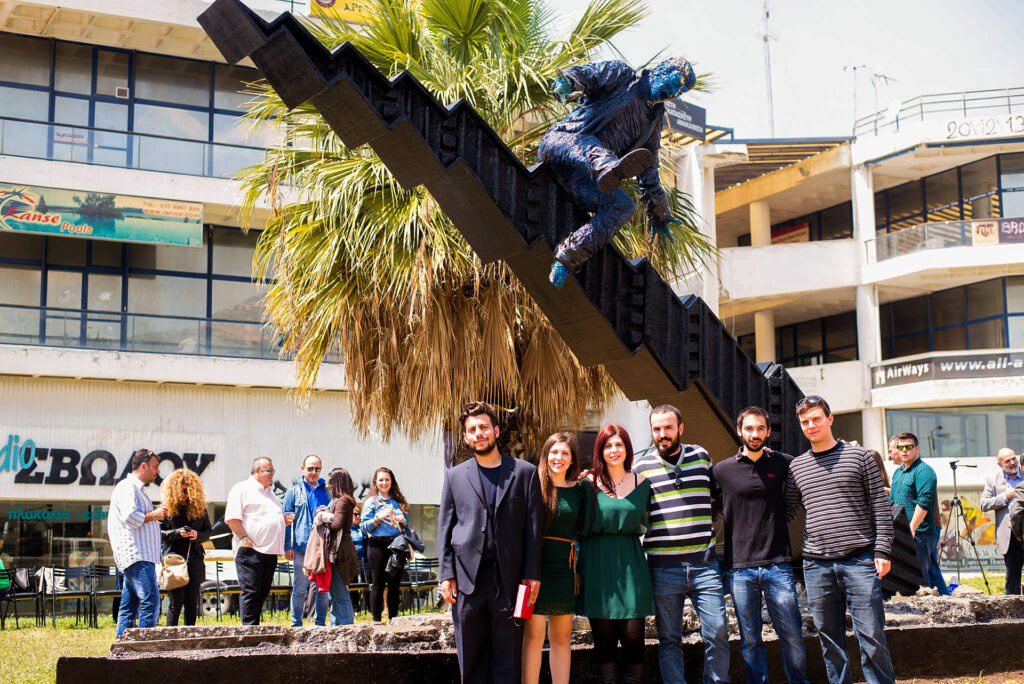Thoughts on the Artistic Project “Crisis” by Artist Anastasios Nyfadopoulos

Thoughts on the Artistic Project “Crisis” by Artist Anastasios Nyfadopoulos
“The artist visualizes and portrays,” wrote Kandinsky. This statement, besides revealing a specific meaning for Kandinsky himself as the introducer of abstract art, becomes very relevant in times of crisis. The artist “sees,” feels, and has the ability to express and reflect the peculiarity of his time, denounce and awaken people through the artistic forms that he creates.
Unfortunately, in many cases, the aesthetic requirements of these artistic forms are neglected, and the goal of the artist is simply to transmit a specific dogmatic “message,” which is presented by an equally rigid visual structure of a propagandistic nature.
Fortunately, on many other occasions, we have artists like Delacroix, who portrayed the passion of the fighters of the French Revolution; like Picasso, who created the famous Guernica and denounced one of the countless atrocities of fascism. We have artistic projects depicting the cruel working conditions in the growing industrial West in the 19th century, and the art of Kặthe Kollwitz reflecting the miserable conditions of life of the Silesian weavers in the first half of the 20th century, a period of unemployment and social unrest. These projects have a denunciatory message but at the same time are characterized by great artistic value.
The artwork “Crisis” by Mr. Anastasios Nyfadopoulos depicts crisis and the agony experienced by contemporary Greek society, as well as many other societies. Its message is denunciatory, and it is achieved by combining two uneven and heterogeneous parameters implying at the same time the problematic relationship between them. The artist employs a universally familiar and easily recognizable visual element, a financial index, and juxtaposes it with a human figure desperately trying to maintain balance atop it, feeling the very foundations of their life crumbling. The materials of construction, fiberglass, polyester, resin, iron, are all products of the same economy that has trapped the man and determines his living existence according to its financial indicators and principles. The comparison of the sizes of the two parameters of the structure – that of the index and that of the man – depicts the catastrophic dominance of the first parameter over the second.
“Crisis” of A. Nyfadopoulos is a cry of society, transmitting in our city an alert signal. Our human existence is at threat: the same applies to the values and achievements of the critical spirit cultivated by modernists. The ‘financial market’, impersonal and dominant, seeking to maximize its profits, has erected sharp battlements, which the modern man is trying to hold onto. The fort appears impregnable. Is it really?
Niki-Xara Mpakakou-Karagounis
Professor of Philosophy
Department of Philosophy
National and Kapodistrian University of Athens
This article is a translation of the original text written in Greek.

